Finishes
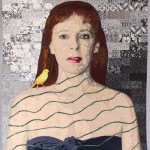 I have been working a blue streak in the studio lately. Not only did I finish The Canary, I also worked with Leisa to make 5 more small pieces for the Micro Bubbles Series (so we’d have 8 total for the JSU show) AND a large triptych for the Wash & Wax show opening at Hammond Gallery at Jacksonville State University on Thursday.
I have been working a blue streak in the studio lately. Not only did I finish The Canary, I also worked with Leisa to make 5 more small pieces for the Micro Bubbles Series (so we’d have 8 total for the JSU show) AND a large triptych for the Wash & Wax show opening at Hammond Gallery at Jacksonville State University on Thursday.
You can see The Canary on its new page here, and you can see the new Micro Bubbles Series II here — scroll down to the bottom to see Series II. I don’t have a pic of Dripped yet. It’s too large for my studio, but I’m planning to take pics of tomorrow once it’s hung at the gallery tomorrow.
The university has unfortunately changed the opening reception to invitation only. They will, however, have a public closing reception on April 7th, and the show will be open the entire month of March (after tomorrow when it’s hung). I have several friends in the area since I used to live near there that I hope will go see the show.
A friend of mine has asked me to explain how I do facings. I took pics and then decided maybe someone else would like to see how they’re done.
I started doing them during the Wash & Wax series. They give a much cleaner look than a binding, and they’re much easier on the fingers since you’re sewing through less layers. It was also the perfect finishing technique for pieces that had a lot of vinyl on them. I couldn’t iron a binding back from off the side of vinyl or it would melt the vinyl, but I had no problem ironing vinyl from the back of the piece while attaching facing.
I cut 2″ lengths for the four sides as well as 4 3-3/4 inch squares. The square is used in the corners, and the bias edge is a blessing.
Mark the top of the quilt with the finishing lines. I mark a rectangle with squared up corners (which with a large piece can be more easily said than done). Press each of the four squares in half. Then pin them into the corners that you’ve marked and sew them on with a 1/4″ stitch from the outside edges.
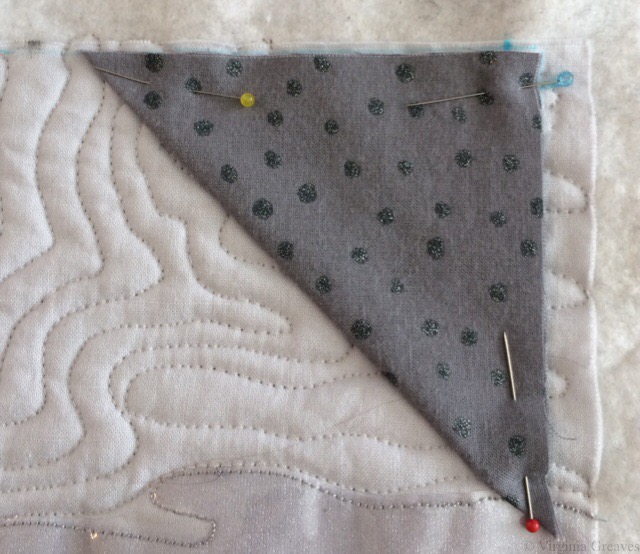
Take the 2″ strips and sew them together to make them long enough for each side (not all the way around). Fold back 1/4″ to the wrong side and press. Then I like to add 1/2″ fusible strips to hold down that 1/4″ that I’ve just folded back. Leave the paper on.
Then pin the facing strip to the sides — but don’t go all the way into the corner. I’m further over here to the left than I need to be. The folded bias square underneath is going to hide the edge anyway. It’s going to be on top after all of this is flipped to the back. After I made this one, I didn’t put the facing strip as far over on my next piece and had less bulk in the corner — which made turning the corner inside out easier.
Sew the 2″ strips to the front of the quilt, right sides together. The folded long side with the fusible will be on the opposite side.
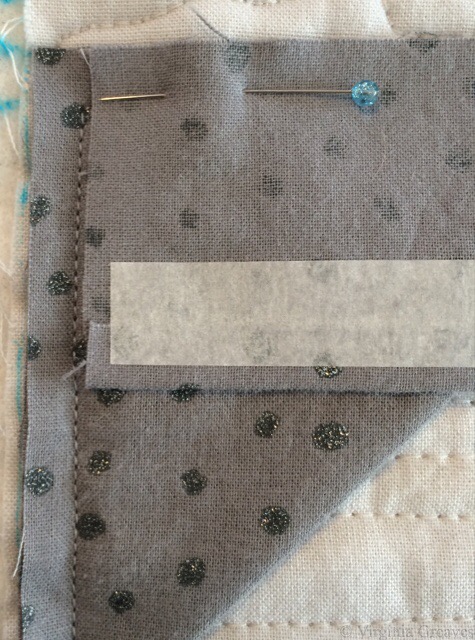
Then press the strips open. Here, you see the top facing pressed open. The right side strip was pressed open and then was stay stitched about 1/8″ from the fold. That’s the next step. Stay stitch all the way around. It makes it easier for the facing to pull to the back. (Lock your stitches at each beginning and ending.)
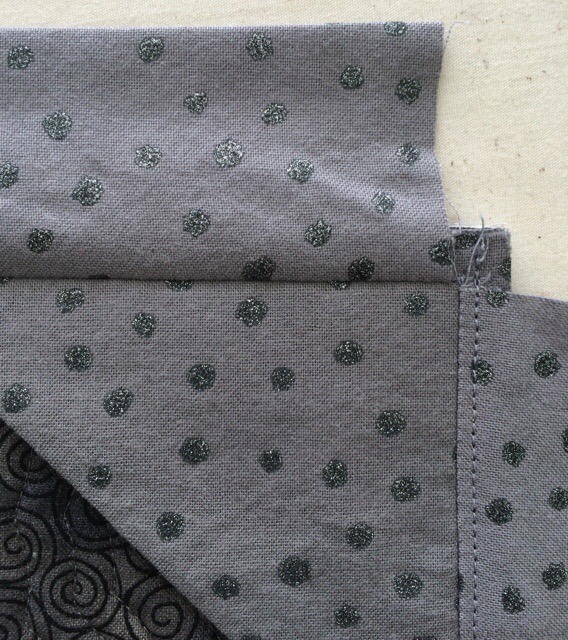
At this point, I cut a small strip of 1/2″ fusible and press it on to the folded edge of the square in the corner. Again, leave the paper on.
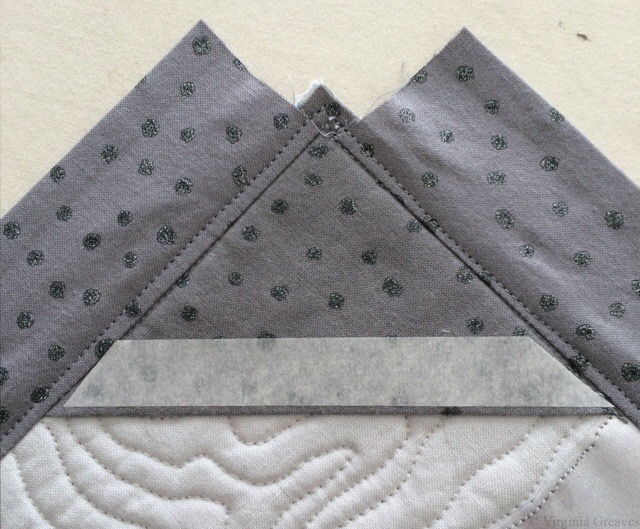
Then turn to the back. Turn the corners inside out.
Then take the paper off the fusible on one strip on one side. Using your iron and steam, pull the facing to the back and fuse down. Don’t worry about the corners until all of the sides are done.
Then take off the paper on the next strip and pull it down. Steam is your friend. The fusible will hold down the edge. If the facing isn’t straight, rip it off, reposition it, and re-steam it in place.
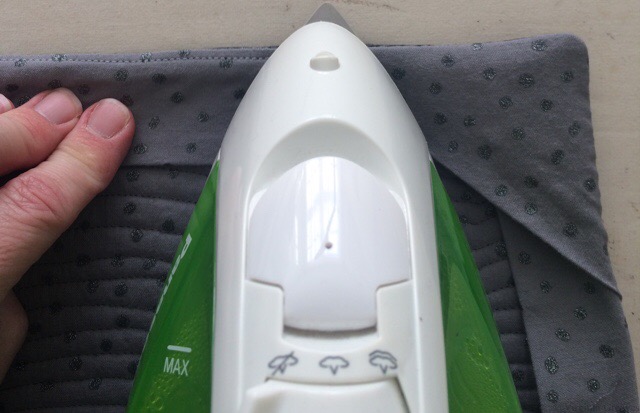
When all four sides are down, work on each corner. Take off the paper strip underneath and fuse it down. The steam will help the bias lay down if it’s a little wavy on that edge.
Notice that I used the same fabric for the backing, the facings, and the corners. I also used the same fabric for the sleeve. It gives it a clean look on the back.
I love using the fusible to hold everything in place until I can hand sew it down — which is the next step. I used to use the clear Elmer’s glue on bindings to hold everything in place before hand sewing, but I found that after a few years of travel, my bindings would begin to wrinkle. I think that even though the glue is water soluble, it wasn’t entirely washing out (even though I would soak my pieces in tubs of water for a while). Over time, it was drawing the fibers together — like a starch would. So it occurred to me to use fusible. It’s all over the front of my work — might as well use it on the back as well. And I know what to expect from it over time.

Then add the sleeve, leaving 1/2″ from the top from the fullness in the sleeve (I always allow 1/2″ of fullness for any thickness in the hanging device).
The first few times I did a facing, I topstitched all the way around from the front to the back. The thread color became an issue as I went around, so I didn’t care for that as much. The stay stitching accomplishes the same thing, and it’s invisible from the front.